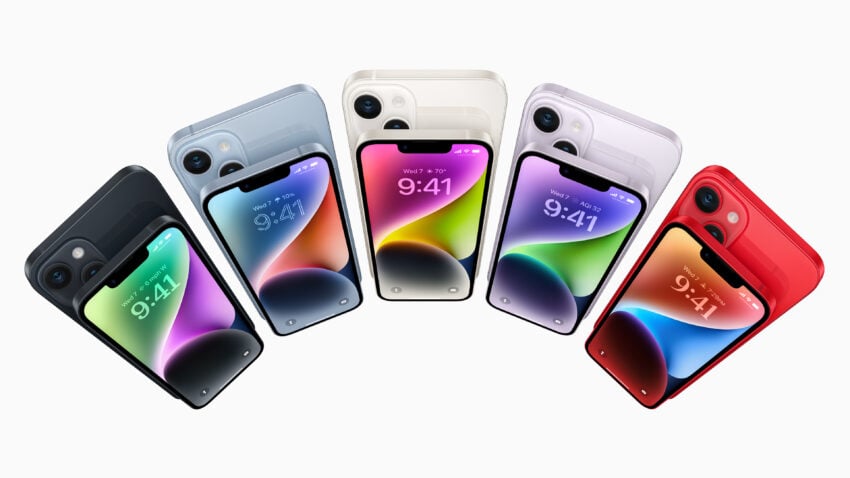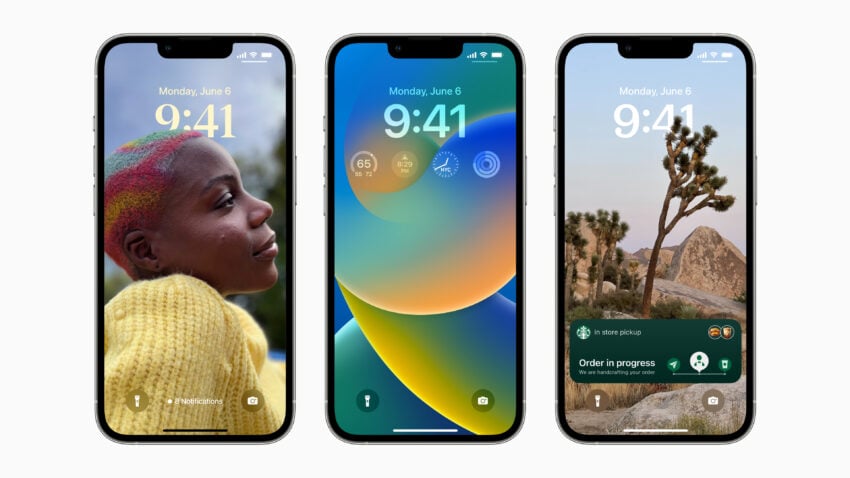How to Fix iPhone 14 Battery Life Problems is a post by Adam Mills from Gotta Be Mobile.
If you run into iPhone 14, iPhone 14 Plus, iPhone 14 Pro, or iPhone 14 Pro battery life problems, there are steps you should take before contacting Apple support.
We haven’t seen widespread complaints about iPhone 14 battery life, but some users are saying their phone’s battery is draining faster than it should be.
iPhone battery life issues are common, particularly after Apple releases new iOS software. We also know that 5G connectivity drains batteries faster than LTE so complaints about battery drain aren’t surprising to see.
If you start noticing severe battery drain on your iPhone 14 you’ll obviously want to try and fix the problem immediately. In this guide we’ll take you through some fixes that might help you fix bad iPhone 14 battery life.
- Restart Your iPhone
- Update Your iPhone
- Turn Off Always-On Display
- Turn Off 5G
- Check Your Apps
- Turn Off Keyboard Haptics
- Reset All Settings
- Use Low Power Mode
- Downgrade iOS
These are fixes that have worked for us over the years and they might help you solve your battery issues in minutes and avoid a chat with customer service.
Restart Your iPhone 14
If your iPhone 14’s battery starts draining fast, we always recommend restarting your device before doing anything else.

Power your iPhone 14, iPhone 14 Plus, iPhone 14 Pro, or iPhone 14 Pro Max down, wait a minute, and power it back on. If it’s still draining quickly, move on to the other steps below.
Update Your iPhone
Apple will periodically release new iOS 16 software updates for the iPhone 14 series. Point updates (x.x.x) are typically focused on fixing bugs while milestone upgrades (x.x) usually provide a mix of features and fixes.
The company might not call out battery life fixes in an iOS 16 update’s change log, but new firmware always has the potential to help alleviate battery drain issues.
For more on the latest version of iOS 16, take a look at our guide.
Turn Off Always-On Display
Always-On Display is a useful feature, but it has the potential to drain your iPhone 14’s battery life.
The feature is on by default but if you don’t need it, you might try turning it off to see if your phone’s battery life improves. Here’s how to do that:
- Go to Settings
- Tap on Display & Brightness.
- Scroll down to Always On and turn Always-On display off or on.
Turn Off 5G
Like the iPhone 13 series, the iPhone 14 series supports 5G connectivity and it could drain your battery much faster than LTE. If you don’t need to use 5G or you don’t need to use it all the time, head into your iPhone 14’s settings.
There are a few 5G settings you’ll want to commit to your memory bank. To find these, you’ll want to head into the Settings app, then Cellular, then Cellular Data Options, then Voice & Data.
If you’re in the right place you’ll notice three options:
- 5G On
- 5G Auto
- LTE
5G On means your iPhone 14 will use 5G whenever it’s available, even if it could kill your device’s battery life.
The 5G Auto option only uses 5G only when it won’t significantly drain your phone’s battery. 5G Auto is the default and the option most people should select.
Check Your Apps
Apps can sometimes have a negative impact on your phone’s battery life and you’ll want to investigate them if you’re noticing abnormal drain.
Checking app performance is extremely easy on the iPhone 14 series. Here’s how to do it:
- Head into your Settings app.
- Select Battery.
- Scroll down to the Battery Usage tool.
This battery usage tool shows you the apps draining your iPhone 14’s battery and when they’re doing so.
If you use an app a lot, it will obviously drain more battery than apps you never use. If you see an app you rarely use sucking up a ton of power, you’ll want to investigate further.
If that’s the case, try deleting the app from your device and see if things approve. If the app is essential in your day-to-day routine, we recommend downloading the latest update from the developer.
If that doesn’t help, you might need to downgrade back to a previous version of iOS 16 if the option is available.
Turn Off Keyboard Haptics
iOS 16 allows you to enable haptic feedback for the iPhone 14’s keyboard.
Unfortunately, Apple says turning on keyboard haptics might affect the battery life of your iPhone. If you don’t need keyboard haptics enabled, you should turn it off.
- Open up the Settings app.
- Go to Sounds & Haptics
- Tap Keyboard Feedback.
- Toggle Haptic to off.
Reset All Settings
You might also try resetting all of your iPhone 14’s settings.
Before you do this, note that it will cause your device to forget known Wi-Fi networks so make sure you have your passwords stored away somewhere.
- Head into the Settings app.
- Tap General.
- Tap Transfer or Reset iPhone.
- Tap Reset.
- Tap Reset All Settings.
- Enter your passcode if you have one enabled.
Once the process is complete, you’ll need to reconnect your iPhone 14 to your Wi-Fi network(s) and Bluetooth devices.
Use Low Power Mode
Low Power Mode helps conserve battery life by shutting off services that could drain your battery.
You can turn Low Power Mode on and off whenever you want. Your iPhone will also prompt you to turn it on whenever it reaches 20% battery.
If you haven’t done so already, add Low Power Mode to your Control Center. Control Center is the menu that pops up when you swipe up in from the top right of the screen. Here’s how to do that:
- Head to Settings.
- Tap Control Center.
- Tap Customize Controls.
- Tap the green plus sign next to Low Power Mode.
The next time you open up Control Center on your device you’ll notice a battery icon. Tap it to enable, or disable, Low Power Mode on your device.
You can also turn Low Power Mode on via your Settings. Here’s how to do that:
- Go into the Settings app.
- Tap Battery.
- Tap Low Power Mode.
- Toggle it On.
Downgrade Your iPhone 14’s Software
If you can’t find a fix for your issue, and/or you don’t want to wait for Apple’s next iOS 16 update, you can try downgrading your iPhone 14’s software if the option is available.
For more on the downgrade process, take a look at our walkthrough.
Install iOS 16.2 for Better Security |
||||||||||||||||
 |
||||||||||||||||
|
If security is important to you, think about installing Apple's iOS 16.2 update right away. iOS 16.2 brings a ton of important security patches with it and you can dig into the details on Apple's security site. The update also brings end-to-end encryption to iCloud, iMessage, iPhone backups, Notes, Photos, and more. If you want to learn more about it, head over to Apple's guide. If you decided to hold off on installing iOS 16.1.2, you'll get its solitary security patch with your upgrade. Learn more about it right here. If you skipped iOS 16.1.1, you'll get its security patches when you upgrade. You can learn more about them right here. If you missed the iOS 16.1 update, it brought 19 security patches to the iPhone and you can learn about the particulars of those over on Apple's website. If you failed to download iOS 16.0.3, it had one security patch on board, a fix for a potential exploit within the Mail app. For more about the fix, check out Apple's security site. If you're still running iOS 15 your iPhone, you'll get a bunch of other patches when you upgrade. iOS 16.0 brought a ton of security patches to the iPhone. If you're interested in the exact nature of these improvements, you can read about them over on Apple's security website. In addition to those patches, iOS 16 brings some additional enhancements to privacy and security including Safety Check which, according to Apple, will help "people in domestic or intimate partner violence situations review and reset the access they’ve granted others." The feature also resets system privacy permissions for apps and restricts Messages and FaceTime to the device on hand. Apple's also made some improvements to Passkeys in Safari. iOS 16 brings a brand new sign-in method that's end-to-end encrypted and safe from phishing and data leaks. |
||||||||||||||||
|
||||||||||||||||
How to Fix iPhone 14 Battery Life Problems is a post by Adam Mills from Gotta Be Mobile.















0 Commentaires